Orange Fruit Benefits
“Orange strengthens your emotional body, encouraging a general feeling of joy, well-being, and cheerfulness.” – Tae Yun Kim
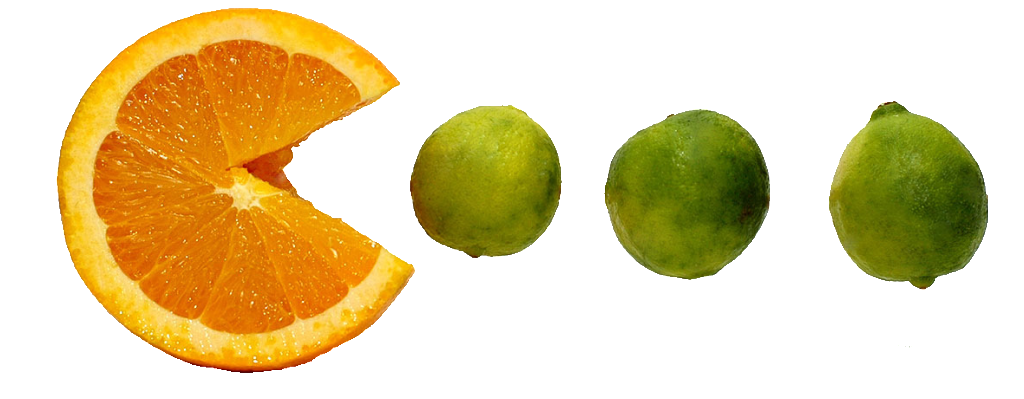
Who doesn’t love a delicious and juicy orange as a snack? They are popular with athletes because they can be easily eaten for a burst of energy. You can enjoy eating one or two oranges a day most of the year for that same energy-boosting effect. Oranges have so many benefits and are consider a Nutritional Power-Food.
- Nutrients in oranges are plentiful and diverse. The fruit is low in calories, contains no saturated fats or cholesterol, but is rich in dietary fiber, pectin, which is very effective in persons with excess body weight. Pectin, by its action as a bulk laxative, helps to protect the mucous membrane of the colon by decreasing its exposure time to toxic substances as well as by binding to cancer-causing chemicals in the colon. Pectin has also been shown to reduce blood cholesterol levels by decreasing its re-absorption in the colon by binding to bile acids in the colon.
- Oranges, like other citrus fruits, is an excellent source of vitamin C (provides 53.2 mg per 100 g, about 90% of DRI); Vitamin C is a powerful natural antioxidant. Consumption of foods rich in vitamin C helps the body develop resistance against infectious agents and scavenge harmful, pro-inflammatory free radicals from the blood.
- Orange fruit contains a variety of phytochemicals. Hesperetin, naringin, and naringenin are flavonoids found in citrus fruits. Naringenin is found to have a bio-active effect on human health as antioxidant, free radical scavenger, anti-inflammatory, and immune system modulator. This substance has also been shown to reduce oxidant injury to DNA in vitro studies. Total antioxidant strength (ORAC) of oranges (navel variety) is 1819 µmol TE/100 g.
- Oranges also contain very good levels of vitamin A, and other flavonoid antioxidants such as alpha andbeta-carotenes, beta-cryptoxanthin, zea-xanthin and lutein. These compounds are known to have antioxidant properties. Vitamin A is also required for maintaining healthy mucus membranes and skin and is essential for vision. Consumption of natural fruits rich in flavonoids helps the body to protect from lung and oral cavity cancers.
- It is also a very good source of B-complex vitamins such as thiamin, pyridoxine, and folates. These vitamins are essential in the sense that body requires them from external sources to replenish.
- Orange fruit also contains a very good amount of minerals like potassium and calcium. Potassium is an important component of cell and body fluids that helps control heart rate and blood pressure through countering sodium actions.
Health Benefits of Oranges:
1. Helps Prevent Cancer
Oranges are rich in citrus limonoids, proven to help fight a number of varieties of cancer including that of the skin, lung, breast, stomach and colon.
2. Prevents Kidney Diseases
Drinking orange juice regularly prevents kidney diseases and reduces the risk of kidney stones.
Note: drink juice in moderate amounts. The high sugar content of fruit juices can cause tooth decay and the high acid content can wear away enamel if consumed in excess.
3. Reduces Risk of Liver Cancer
According to two studies in Japan eating mandarin oranges reduces liver cancer. This may be due in part to vitamin A compounds known as carotenoids.
4. Lowers Cholesterol
Since they’re full of soluble fiber, oranges are helpful in lowering cholesterol.
5. Boosts Heart Health
Oranges are full of potassium, an electrolyte mineral is responsible for helping the heart function well. When potassium levels get too low, you may develop an abnormal heart rhythm, known as an arrhythmia.
6. Lowers Risk of Disease
Oranges are full of vitamin C which protects cells by neutralizing free radicals. Free radicals cause chronic diseases, like cancer and heart disease.
7. Fights Against Viral Infections
Studies show that the abundance of polyphenols in oranges protects against viral infections.
8. Relieves Constipation
Oranges are full of dietary fiber which stimulates digestive juices and relieves constipation.
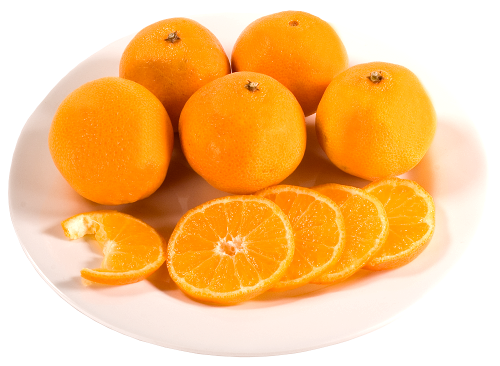
9. Helps Create Good Vision
Oranges are rich in carotenoid compounds which are converted to vitamin A and help prevent macular degeneration.
10. Regulates High Blood Pressure
The flavonoid hesperidin found in oranges helps regulate high blood pressure and the magnesium in oranges helps maintain blood pressure.
11. Protects Against Skin Diseases
Oranges are full of beta-carotene is a powerful antioxidant protecting the cells from being damage which also protects the skin from free radicals and prevents the signs of aging.
12. Oranges Alkalize the Body
Although oranges are acidic before you digest them, they contain many alkaline minerals that help to balance out the body after they are digested. In this respect, they are similar to lemons which are one of the most alkaline foods available.
13. Provides Smart Carbs:
Oranges like all fruits have simple sugars in them, but the orange has a glycemic index of 40. Anything under 55 is considered low. This means as long as you don’t eat a lot of oranges at one time, they won’t spike your blood sugar and cause problems with insulin or weight gain.
14. Fights Against Viral Infections
Studies show that the abundance of polyphenols protects against viral infections.
15. Purifies Blood
The iron and Vitamin B6 in oranges help in the production of hemoglobin and increase the oxygen carrying capacity. They also purify the blood.
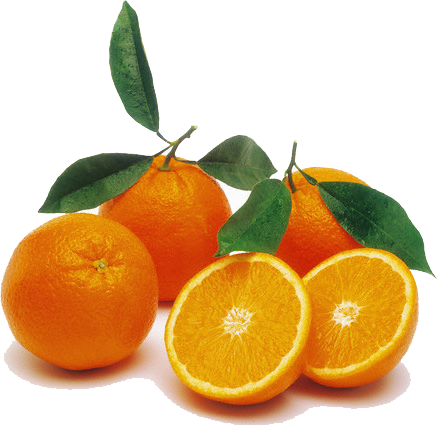
16. Keeps Bones and Teeth Strong
The calcium in oranges helps to keep your bones and teeth strong.
17. Helpful in Many Diseases
Oranges are effective in both preventing and treating certain diseases like asthma, bronchitis, pneumonia, tuberculosis, rheumatism etc.
Interesting Orange Facts:
- Oranges are the largest citrus crop in the world.
- Navel Oranges are named after the belly button shape near the bottom!
- In the 18th Century British sailors took sauerkraut and citrus fruits on the ships to prevent scurvy.
- In Queen Victoria’s day, oranges were given as Christmas gifts in England.
- Did you know that the color orange came from the orange fruit?
- Two most common varieties of oranges are Navel and Valencia oranges.
- Orange is the world’s third favorite flavor after chocolate and vanilla.
History of the Orange
- Oranges where first grown in southeast Asia, northeastern India and southern China and were first cultivated in China around 2500 BC.
- In the first century AD, Romans brought young orange trees all the way from India to Rome. North Africa began growing oranges in the 1st century AD.
- Christopher Columbus brought orange seeds in 1493 across the Atlantic Ocean to Spain’s Canary Islands to Haiti, where he planted orange orchards. By 1518 oranges were introduced to Panama and Mexico, and a little later Brazil started growing orange trees.
- America’s first orange trees were planted in Florida in 1513 by Spanish explorer Juan Ponce de Leon.
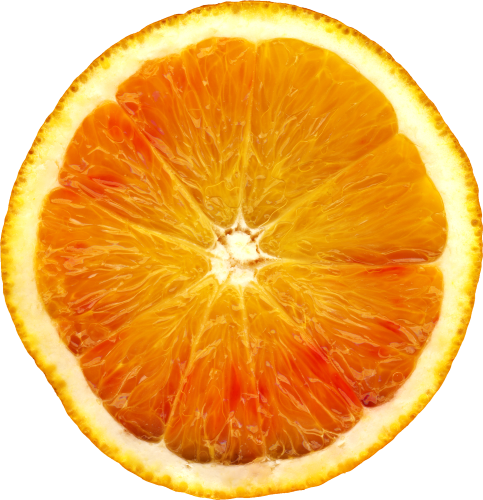
Growing Oranges
- They are a tropical to semitropical, small evergreen flowering trees growing to about 5 to 8 meters tall. Evergreen means they produce flowers and fruit all the same time.
- Oranges are either sweet or bitter but as we know most of us eat only the sweet oranges. The most popular sweet varieties are Valencia, Navel, Persian variety and blood orange.
- Warm weather can cause the orange skin to re-green but it will still taste good.
- Orange peels contain many volatile oil glands in pits. Interior flesh is composed of segments, called carpels, made up of numerous fluid-filled vesicles that are actually specialized hair cells.
Selection and Storage
- In the northern hemisphere orange fruit season begins in October and lasts until February.
- The bigger the navel in an orange, the sweeter it will be.
- Buy fresh fruits that are firm, yet yield to gentle pressure.
- Fresh oranges have bright color, no wrinkles on the skin and feel heavy for their size.
- Avoid overly soft oranges with spots and mold.
- Oranges can be kept at room temperature for a week or so and but keep well for up to two weeks in the refrigerator. Keep them loose in the fruit container and place in the cool area away from excessive moisture.
- Store freshly squeezed orange juice inside the freezer compartment for later use.
- Store dried orange zest in a cool, dry place in an airtight glass container away from moisture.
- Moro oranges are also called blood oranges because the pulp is bright red.
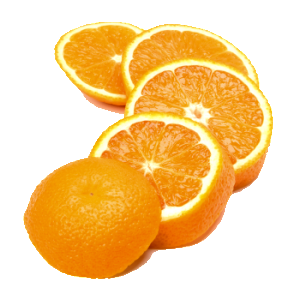
Preparation and Serving tips
- It is simple to eat a fresh orange anytime or anywhere.
- Making fresh orange juice at home is so easy and much better than those commercial drinks that may contain preservatives and artificial coloring.
- Oranges will produce more juice when warmer, so always juice them when they are at room temperature.
- You can roll the orange under the palm of your hand on a flat surface will also help to extract more juice.
- It is best to drink the juice at room temperature.
- The outermost part of the rind grated using zester to produce orange zest, which is tasty.
- There is no orange waste because it is all biodegradable.
Oranges have many health benefits. They are rich in Vitamins C and A, flavonoids, antioxidants, calcium, magnesium, potassium, dietary fiber etc. Oranges have more than 60 flavonoids and 170 phytonutrients that have been shown to have anti-inflammatory, anti-tumour and anti-oxidant properties.
| Principle | Nutrient Value | Percentage of RDA |
|---|---|---|
| Energy | 47 Kcal | 2.5% |
| Carbohydrates | 11.75 g | 9% |
| Protein | 0.94 g | 1.5% |
| Total Fat | 0.12 g | 0.5% |
| Cholesterol | 0 mg | 0% |
| Dietary Fiber | 2.40 g | 6% |
| Vitamins | ||
| Folates | 30 µg | 7.5% |
| Niacin | 0.282 mg | 2% |
| Pantothenic acid | 0.250 mg | 5% |
| Pyridoxine | 0.060 mg | 4.5% |
| Riboflavin | 0.040 mg | 3% |
| Thiamin | 0.100 mg | 8% |
| Vitamin C | 53.2 mg | 90% |
| Vitamin A | 225 IU | 7.5% |
| Vitamin E | 0.18 mg | 1% |
| Vitamin K | 0 µg | 0% |
| Electrolytes | ||
| Sodium | 0 mg | 0% |
| Potassium | 169 mg | 3.5% |
| Minerals | ||
| Calcium | 40 mg | 4% |
| Copper | 39 µg | 4% |
| Iron | 0.10 mg | 1% |
| Magnesium | 10 mg | 2.5% |
| Manganese | 0.024 mg | 1% |
| Zinc | 0.08 mg | 1% |
| Phyto-nutrients | ||
| Carotene-β | 71 µg | — |
| Carotene-α | 11 µg | — |
| Crypto-xanthin-β | 116 µg | — |
| Lutein-zeaxanthin | 129 µg | — |
| Lycopene | 0 µg | — |















